Each modern person at least once in his life has encountered a parasite problem in the body.The number and diversity of parasites, in the literal sense of this word, cannot live without us, simply huge.The parasite in the human body uses it as a food source and the habitat until they are completely exhausted, but does not give their presence.
The parasite size is of a microscope size or can grow up to several meters long, but even in this case, their important activity in the body can not always be perceived.One person, as a rule, did not feel them and did not even know their presence in themselves.Meanwhile, they can live in the human body for many years and even decades, making him unable to overcome.
The parasite in the human body is serious and causes great threat to human health, because they violate the work of the organs and the internal system, causing failure in the work of the immune system and interfere with the complete assimilation of useful substances, vitamins and minerals.In some cases, the situation is so serious that it can even lead to death.
Types of relationships between organisms
In nature, there are several types of relationships between organisms that have a variety of influences.
The impact of one species in another species may be neutral or positive and negative.
In addition, there are different combinations of such relationships.Distinguish:
- Symbiosis;
- Neutral;
- antibiotic.
Symbiosis is a form of relationship between two creatures, from which both are beneficial.
Neutralism is a type of biological connection, including the life of two creatures in a territory, but at the same time they are not related to each other and does not directly affect each other.
Cooking is a kind of antagonistic biological relationship, in which a population limits the ability of another type, adversely affecting it.One of the most negative antibiotics is parasites.
Parasites and parasites
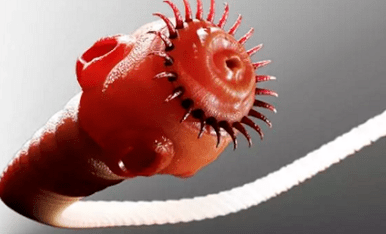
Parasites are an antibiotic in which the representative of a species uses the body of another species as a temporary or continuous environment and is a source of nutrients.
Biological organisms live with the cost of another organism called parasites.
The parasites do not kill their owners, but for a long time using it as a source of food and habitat.
Parasites include:
- Parasitic worms;
- Pathogenic bacteria;
- protozoa;
- mushroom;
- Virus.
The host creatures may be:
- bacteria;
- protozoa;
- plant;
- animal;
- Humanity.
In the process of development, parasites surpassed some stages of development from eggs and larvae for adults (sexual growth, invasion), showing their long-term life and need to change 2-3 owners.
Classification of parasites
All parasites are divided into bonds and options.
Listening to parasites is obliged outside the host body or dies or exists in an inactive state.Example: Virus.They lead an exclusive parasitic lifestyle, that is, they completely depend on the owner and activate their activities in it.
The optional parasite has parasitic lifestyle, but if necessary, it may exist in a completely normal form in the external environment.For example: Fungi and bacteria that cause disease.
According to the nature of the relationship with the home body, they shared:
- real parasites;
- fake parasites;
- Super parasitic.
Parasites are actually similar parasites that parasitic lifestyle is the only form of survival.However, there are parasites that can be linked (constant) and optional (time).For example: lice, fleas, intestinal worms.
Fake parasites - voluntary living organisms, in case of accidentally entering the body, can live in it for a while and harm it.For example, the larvae of a flying room in a person.
Super parasites are parasites living in other parasites.For example, bacteria and viruses in other parasitic insects live in other organisms.
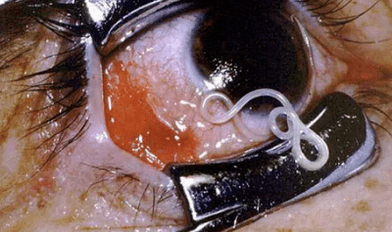
Depending on the time of interaction with the server body, they distinguish:
- continuous parasites;
- Temporary parasites.
The continuous parasites are organisms that proceed with their entire life cycle in the body - the owner, placing the larvae in it.For example: Ascarides, tapeworms, lice.
Temporary parasites;Live and eat at the cost of the owner at a certain stage of development.For example, the larvae of a Volt fly and an image (adult insects)-in fleas and mosquitoes.
At the position of the client, the parasite is divided into:
- Ectoparaites;
- Endoparaites.
Ectoparaites are living creatures on the skin of the host body.For example: lice, fleas, ticks.
Endoparaites are creatures inside the client.Endoparaiites is divided into:
- parasites inside;
- tissue parasites;
- intracellular.
Internal parasites are organisms located in cavities connected to the external environment, for example: ascaris, vlasov -According to the human gut.
Fabric parasites-a type of organism are placed in closed compartments and tissues of the host body, for example, for example, liver bacon, capsule of gangworms.
The intracellular parasites are located in the cells of the body - for example, the owner: Malaria Plasmodia, Toxoplasm.
In terms of distribution in the environment, parasites are:
- Curly, encountered everywhere;
- Tropical, only popular in hot tropical climate.
According to biological and epidemiological characteristics, parasites are divided into:
- Geogelminters- These are the initial parasites undergoing the development of the human body, and then in the external environment (for example: Earth);
- Biological machine- Parasites in which the development cycle takes place not only in the human body, but also in the organisms of other organisms.One person, as a rule, is the last owner, and sometimes intermediaries.
- Contact helminthsThey are distinguished from the home body by adult or half, resulting in a repeated infection or infection of others (automatic, recycling).
How does parasitism fall into the human body
There are many favorable factors that contribute to the penetration of the parasite into the human body:

- dirty hands;
- animal hair;
- poor cooking products (official factors);
- Contact factor;
- cannot be transmitted;
- Percutant.
The dirty hand is the main source of infection with the parasite.There are some diseases called "the disease of dirty hands."Worm larvae, first falling on the skin of the hand, and then in the mouth, causing typical symptoms from the digestive tract.The transmission of these infections is called feces.Therefore, helminths with helminths are in contact with our bodies.For example, ascaride eggs penetrate the human body through dirty hands, washed vegetables, fruits, berries, green vegetables and also spread to flies.
Their animals and wool are a source of Ascaride and Liphyli with worms.For example, for a long time, it has fallen from animal wool, keeping vitality (up to about 6 months) and, falling on carpets, objects, beds, toys and children's hands, penetrating the food sugar.
In addition, through wet breath, dogs and cats can melt the parasitic egg at a distance of 3-5 meters.In addition, there are fleas on wool of dogs and cats, also withstand deep eggs.
The infection method with parasites is done:
- through poorly washed vegetables and fruits;
- Poor cooked food (usually meat);
- Water infected.
For example, cooked meat is incorrect, homemade or homemade pork fat can be infected with a person trichinellosis and echinococcus, and dried fish or cooked fish eggs can cause infections caused by Opisthorchia and broadband.
The transmission method occurs by using blood -causing insects, for example: ticks, mosquitoes, lice, fleas, bugs.
Contact - Domestic infection is done through people or animals infected, when contacting or using common household items.
The infection method is paved while bathing in reservoirs or exposed to infected soil.The larvae enter the body through mucous membranes or human skin in contact with water or soil infected.
The features of the device
Almost all parasites are highly adaptable to survival.There are several factors contributing to their high vitality:
- A long life.For example, worms live in the human body for many years, and sometimes exactly as the owner of life.
- Worms can exist and do not collapse in external environments for decades.
- The development stage of the parasite also contributes to its life expectancy.It surpasses all stages of development, starts from eggs, continues the larvae and changes of the owner, in the case of lack of nutrients.
- The possibility of parasites causes immunodeficiency in the owner, allowing you to penetrate into external pathogens, as well as "stimulating" internal infections inactive.
- The helminths fall into the gastrointestinal tract of a micro -drug -producer, allowing them to overcome their own deaths, but at the same time they violate the normal eating process and cause allergic reactions - allergies in their owners: asthma, urticaria, dermatitis.
- The inviolability of parasites is associated with the exchange of genetic information during sexual reproduction, leading to the stability of their homogeneous population.
- The wide vitality of helminths in many habitats: soil, water, animals and plants.
- The lack of effective methods of immune immunity, as parasites can inhibit or modify the immune response of the host body.
How to identify parasites in the body
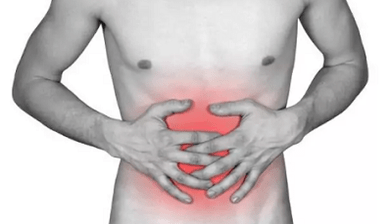
As a rule, a person asks such a question when his health is completely destroyed.People often eliminate the problem in the early stages until it develops into a serious form and will affect his health.
Because parasites are divided by the habitat in the body - the owner of the endoparaites and the Ectoparaites, the symptoms are divided into inside and outside.
Ectoparaites are characterized by a certain activity, manifested by the following symptoms:
- Da Da rash;
- itchy;
- burn;
- hypertension;
- Pain (if it's a bite);
- The presence of a wound at the bite place.
Detecting Endoparaites is much easier.The following actions are done for this:
- Visual identification (if there is an external penetration through the skin);
- Check by microscope.
The discovery of Ectoparaites is a difficult task, because in the evolutionary process, the dependents of Muslims have adapted to the survival, while camouflage and not betraying themselves, they conduct sabotage work in the home body.In the end, a living, for example, with worms from appearing and their development stages can take several months to a decade.So how to determine the presence of parasites in the body?
External and internal manifestations
Because parasites differ in longevity and actively multiply on the human body, they cause long -term and chronic symptoms.
The external manifestations of parasitic activity include:
- Da Da rash;
- itchy;
- burn;
- hypertension;
- fever;
- The edema of Quincke.
It is important to know that the level of allergic development depends on many factors:
- The position of the parasite in the body;
- Contact parasites with important tissues and organs;
- The amount of toxin production.
The following symptoms include violations in the body of the internal invasion:
- Disorders in the work of the gastrointestinal tract (nausea, diarrhea, belching);
- Weight fluctuations related to lack of nutrients and reduce appetite;
- Craving for sweets due to metabolic disorders and general weakness of the body;
- Chronic fatigue syndrome is manifested by general fatigue, drowsiness, in some cases of insomnia, concentration and memory decline;
- continuous headache caused by the weakness of the body and toxicity;
- Grinding teeth in a bruxism, especially manifested in children;
- swelling of limbs;
- Neurological disorders and spiritual disorders, because parasites can cause depression and discomfort;
- cough paroxysmal;
- muscles and joint pain;
- pain of the skin;
- Skin damage (dermatitis, eczema, acne and acne).
It is especially important to know the common symptoms observed with intestinal invasion.
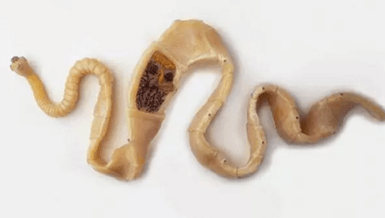
Violation in the digestive tract, is manifested by the following symptoms:
- Intestinal cramps;
- irritable bowel syndrome;
- flatulence;
- constipation or diarrhea;
- Change the color of the feces;
- itching in the anus;
- Visual detection of helminths;
- The presence of worms in GAG.
Because worms can reach significant size in the body, they can complicate the process of the process of the feces and violate the work of other organs, for example, bile ducts.
Parasites can cause violations in the work of a specific organ or system.
The most common violations are:
- Anemia.
- Lesions of the central nervous system.
- Abscess in the liver.
- Pus inflammation of gallbladder and pancreatic glands.
- Fruit in immunity, until the development of autoimmune reactions.
- Disorders in the operation of the respiratory system.
- Joint disease.
Diagnosis of parasitic
All of these symptoms cannot always confirm the exact presence of parasites in the body, as these symptoms can be observed with many diseases.
You can establish the presence of parasites in the human body when checking feces.However, this method is unreliable, because parasitic larvae are not always seen through microscopes or ignore them.In addition, not all parasites lay many eggs.
To detect parasitic larvae in the feces, it takes 8 matches 10 times a part of analyzing.But if in this case, the analysis does not show anything, but the doctor has doubted, some serum blood tests are prescribed, this will help detect antibodies of helminths that appear in the blood for a few weeks after being infected with parasites.
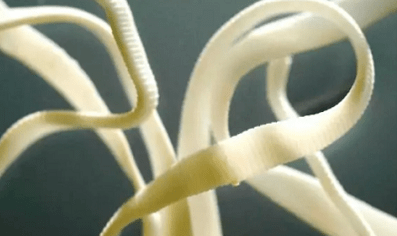
There are other methods to identify the Viking dependents, the chain tests are classified.A sequence with a capsule was put into the intestine through the nose and removed it after four hours with the samples received.
Another method is laparoscopy in which experts consider the condition of the inner surface of the colon using a special probe.
Experts found that the most common parasites were helminths.In addition, they are all very feasible and fertile, and their goals are destroying their owners and extracting their own maximum benefits.
How to eliminate parasites from the human body
It is difficult to escape the parasite, but it is possible.It is important to prioritize: not only need to know how to eliminate parasites, but also to understand what the treatment process is.It is done in three directions:
- The destruction of parasites at all stages of existence.That is, it is necessary to destroy not only adults, but also their larvae and eggs.
- Normalization of the work of all organs and systems of the body.
- Restore body.
To respond to all three items above will help modern drugs based on the plant ingredients that experts will prescribe.
Such medicines are modern and have a certain treatment effect.The use of these drugs in the complex allows you to combine their treatment effects and get a great result.
Dosage and combination of drugs are done on the basis of:
- stages of parasitic aggression;
- general condition of the patient;
- The availableness of complications from a certain body;
- The severity of the disease process.
The priority of Anthelmintic medicine is based on:
- effective;
- protect;
- The ability to combine some drugs for the best treatment effect.
Treatment with folk remedies is a very effective way to eliminate parasites.Normally, the grass cleaning tea is used, neutralizing the harmful effects of parasites, cleaning the liver and gallbladder.
They prepare tea as follows: Take a tablespoon of the following trees: Oak Bark, Buckthorn, Wormwood, Tansy.Then, a tablespoon of plant mixture is poured with 500 ml of boiling water and leaves in a sealed plate overnight.In the morning, when hungry, 100 grams of alcohol are taken.Treatment continues for two to three weeks.
Pumpkin seeds are also very effective in the fight against parasites.To remove parasites, 300 grams of pumpkin seeds are used, they are cleaned, but at the same time they leave as much transparent membrane as possible, surrounding seeds.The seeds must be eaten in the morning when hungry.This formula removes not only parasites, but also improves the function of the intestines, stomach, liver and gallbladder.























